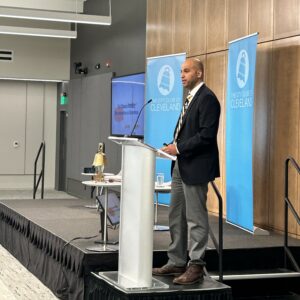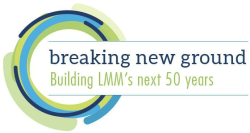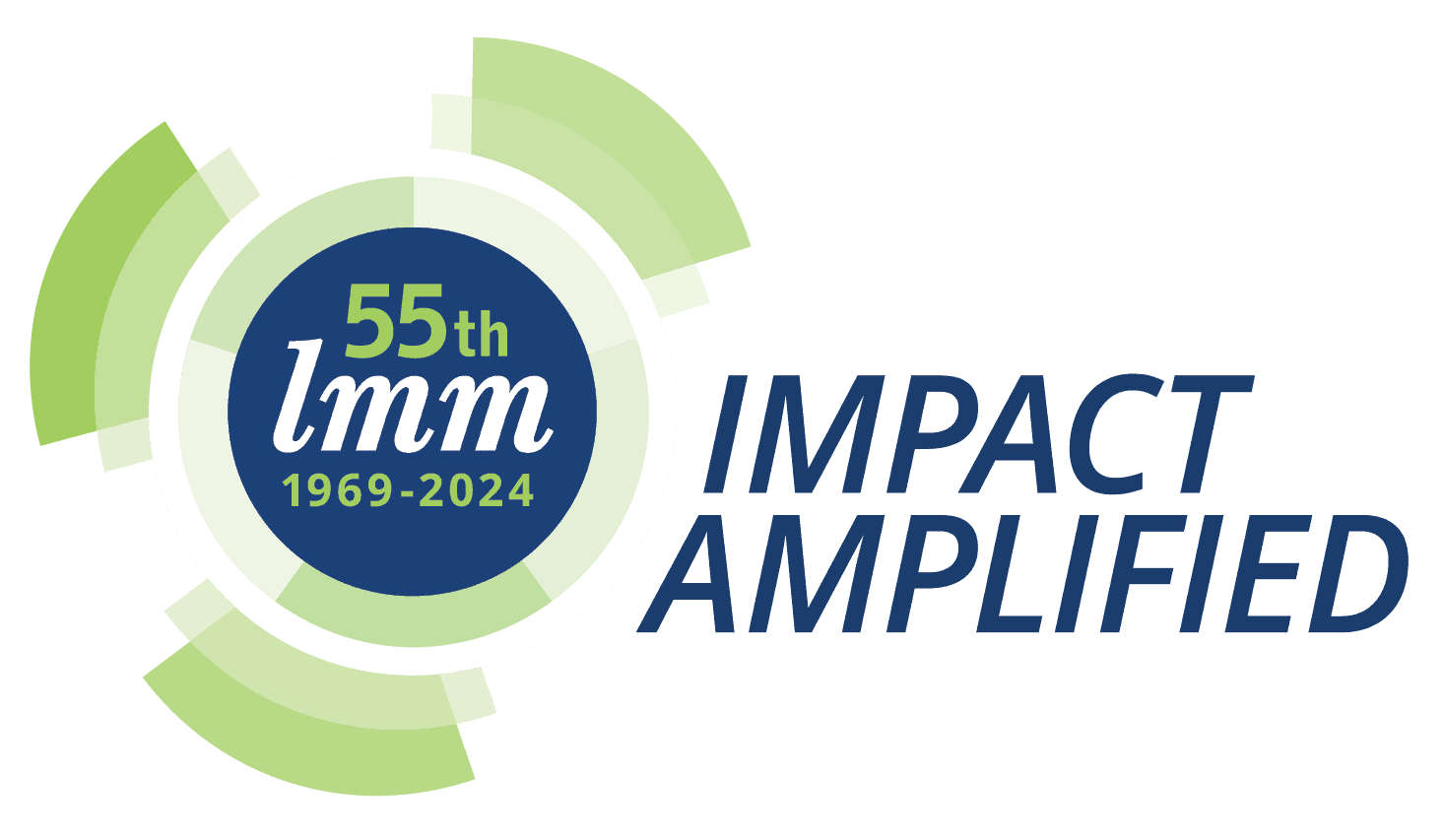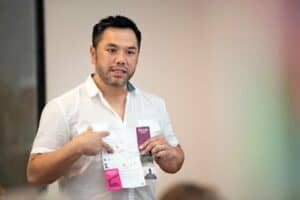
This week, LMM’s Fair Housing Month features have highlighted many of our existing programs. Today we wanted to introduce our LMM community to one of our closest partners in this work – designer Sai Sinbondit. Sai is a critical partner that has helped bring various housing initiatives to life here at LMM. Motivated by an unwavering commitment to equitable and affordable housing opportunities, Sai is currently serving as the project manager for our Breaking New Ground home at 6401 Bonna Avenue (pictured left) and working with LMM to build a small home in our warehouse using CNC-
machines. He also partnered with LMM on a national pitch to bring 3D-printed affordable housing to Cleveland, which made it to the top 5% of applicants nationwide. Sai does all of this in between a full-time job and other community projects, and we are so grateful for the ideas, commitment, and energy he brings to our housing team. Please take a moment to read this interview with Sai and LMM’s Housing & Shelter Project Manager, Claire Billingsley.
CB: How did you get your start in social architecture?
SS: I think my perspective on the built environment has been shaped and formed by my own life experience and it continues to inform how I view and use architecture.
Two of those experiences happened early for me. I came from a family of displaced people. We lived in refugee camps for several years and immigrated to the U.S. when I was young. Early on, we lived in this house that we rented and the condition of it was not that good. The house was in poor condition so much that my family of 6 would all sleep in the living room during the winter because the other spaces would get so cold and, in the summer, because the other spaces would be occupied by critters and such. There was a second story, but we did not use it because of the 24” – 36” diameter hole on the side of the house up there.
Reflecting on both my family’s experiences in the refugee camps and then during our time in the rented house early on – we were happy. Even though those memories were viewed from the lens of a child, those experiences instilled in me the belief for the potentials of what a roof and four walls can imbue in people, which is stability.
CB: What does fair housing mean to you
SS: To me, Fair housing is one of the basic human rights and society, as a whole, should do what it can to provide that right to everyone.
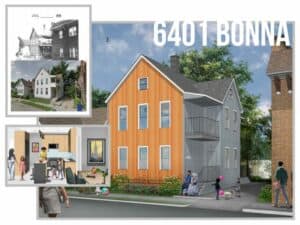
CB: How can architecture promote housing equity?
SS: I can’t speak for the architectural community, but I believe one of the responsibilities architecture has is to make the architectural design, tools, processes, and skillsets accessible – not only to the ones that can afford them, but also to communities and individuals who needs them. Another way for architecture to promote housing equity is to disrupt the supply and demand mismatch. By that, I mean architecture must roll up its sleeve and gets its hands dirty and join the conversations and efforts to help find solutions to reducing the cost and time of supplying new housing and help to improve housing policies and zoning so affordable housing is accessible to everyone.
CB: What motivates you in your work?
SS: My family and others, such as nonprofits and individuals who devote their focus to their communities and people in need. They are my drive.
CB: What inspired you to partner with LMM?
SS: What inspired me to partner with LMM is their mission to advocate for the population in needs and forward-thinking perspectives to not only look at current needs but how those needs can be met better and faster. Such as looking into how we can better leverage technology to help with the solutions to affordable housing problems.
CB: What was your favorite project you worked on?
SS: That is a tough question. I don’t mean to be cliché, but I think all the community projects I have been involved with are all my favorite. Architectural projects tend to range from weeks, months to years so connections and bonds are formed during this time. You end up leaving every project knowing everyone involved and with a sense of stronger community and belonging.
CB: What do you think the future of affordable housing looks like?
SS: Overwhelming but hopeful. On one hand, it seems more than ever, people across the globe are being displaced at a faster rate while housing, in general, is getting more difficult for people to obtain for multiple and complex reasons. On the other hand, there is a growing undercurrent of community service-oriented artists, designers, and architects that are engaging in the critical thinking and problem-solving efforts on affordable housing. There have always been those individuals who had dedicated their crafts to the betterment of the community, but the numbers are growing, especially in the younger generation. Also at the same time, more than ever, technology is more accessible and can be leveraged as a tool by designers and architects working toward contributing to the solutions for complex issues such as affordable housing.
Sai Sinbondit comes from a family of refugees who came to this country when he was a child. On their journey here, his family went through several refugee camps and finally settled in a small community in the northwest corner of Ohio. While growing up, his father’s and mother’s diligence, commitment, and self-reliance to get his family to a better place inspires him to not only experience the world, but to question it, engage it, and to help make it a better place. Sai’s work leverages art, architecture, and digital fabrication technologies as tools to explore and access the world and its dynamic relationship between people and place – focusing on supporting, lifting, and amplifying the voices, and needs of displaced and underserved communities and various non-profit organizations, locally and internationally.
Sai had lived in Cleveland for about 10 years before relocating to the Washington DC area. He still has strong ties to the Cleveland communities and continues to work with individuals and organizations to help find better solutions to issues the community faces. Sai received a Master of Architecture from Syracuse University and graduated with honors in the Bachelor of Fine Art program in Painting and Printmaking from the Center of Visual Arts at the University of Toledo.
Follow Sai on IG @sai_sinbondit

